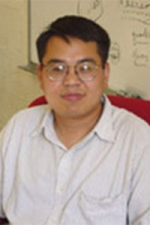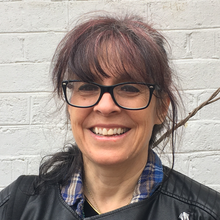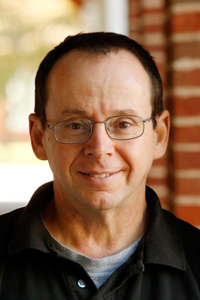DATA SCIENCE ROADMAP TO COMPTON FORM FACTORS OF QUARKS AND GLUONS
Contents
Overview
- Thursday, September 24, Focus on What is Femtography and How do you Measure it,
- Friday, September 25 Focus on Enabling Technology & New Frontiers,
Schedule
September 24:
- Session: 10:00AM to 2:00PM (EDT)
- Introduction
- Welcome and Logistics for the workshop (Charles Hyde): 10:00AM to 10:10AM
- Vision for Center for Nuclear Femtography (Xiangdong Ji): 10:10AM to 10:25AM
- Forming pictures of nuclear dynamics (Matthias Burkardt): 10:25AM to 10:55AM
- Nuclear Femtography in a larger context (Christian Weiss): 10:55AM to 11:25AM
- Break: 11:25AM to 11:40AM
- Formalism and Phenomenology of Deep Virtual Exclusive Scattering (DVES)
- Compton form factors as the interface between Data, Theory, Phenomenology (Charles Hyde): 11:40AM to 12:05PM
- Walking back from the Q2->infinity approximation (Simonetta Liuti): 12:05 to 12:30PM
- Setting the Resolution Scale: QCD Evolution tools (Brandon Krieston, UVA): 12:30 to 12:55PM
- Global Fitting (Kresimir Kumericki, Zagreb U.): 12:55 to 13:25
- Deep Virtual Exclusive Scattering Data and Monte Carlo
- Efforts towards flexible, efficient look-up tables of CFF (Mitchell Kerver, ODU):
- The MILOU Generator. (BNL – EIC). FOAM? TBD:
September 25:
- Session : 10:00AM to 2:00PM
- Deep Virtual Exclusive Scattering Data and Monte Carlo (Cont.)
- Discussion of requirements for a Database of present and future DVES data.
- Moderators: C. Hyde, M. Burkardt
- F.X. Girod(?): Efforts for new CLAS generators
- The Hall A generator (Rafael Paremuzian):
- SIDIS Monte Carlo (Giovanni Angelini, GWU)
- Discussion of requirements for a Database of present and future DVES data.
- Enabling Technology: Part I. Visualization & Artificial Intelligence
- Tessellation for Image Analysis of CNF Data (Tsolakis/Chrisochoides):
- Visualization (Mai Dahshan, VaTech):
- ML for Particle Tracking in Nuclear Physics (Thomadakis/Gagik/Chrisochoides):
- Flash Talks on Enabling Technology: Future Extensions (<5 slides)
- Visualization of CNF Data & Tessellations in 3D/4D (Garner/Tsalikis/Tsolakis/Chrisochoides(ODU) & Mai/Polys (VaTech):
- Machine Learning for global fitting of CFF from sparse data (Joshua Hoskins, UVA):
- End-user Productivity: HPC PARTONS & Tessellations (Tsalikis/Kerver/Purwanto/Chrisochoides):
Registration
Register here:
If presenting use the provided links (see previous email) to upload your presentations or email your file to kgarn006@odu.edu
Presenters
External Visitors
Xiangdong Ji
Dr. Xiangdong Ji received his B.S. from Tongji University and his Ph.D. in 1987 from Drexel University. His research includes theoretical studies of the nucleon structure in Quantum Chromodynamics and experimental search for Dark Matter particles using liquid xenon technology. He had post-doctorial positions at the California Institute of Technology and Massachusetts Institute of Technology (MIT), was a junior faculty at MIT from 1991 to 1996. He is a fellow of American Physical Society (since 2000) and a recipient of the 2003 oversea outstanding young Chinese scientist award from the National Science Foundation of China.
Matthias Burkardt
Dr. Matthias Burkardt earned his PhD in Erlangen, Germany in 1989. His primary research interest is in non-perturbative strong interaction physics and the quark/gluon (=parton) structure of hadrons and nuclei. He is particularly interested in understanding the role of non-perturbative Quantum Chromo Dynamics (QCD) from medium energy to high-energy scattering experiments. Within this area, the main focus of his recent research has been to better understand what one can actually learn from these experiments and/or related calculations. More specifically, even though mathematical expressions in terms of matrix elements of complicated operators exist to describe the outcome of a certain experiment, the complicated nature of these matrix elements often obscures the intuitive physical interpretation of results from both experiments as well as numerical simulations.
Simonetta Liuti
Dr. Simonetta Liuti
David Heddle
Dr. David Heddle received his Ph.D. in physics in 1984 from Carnegie Mellon University under Professor Leonard Kisslinger. His dissertation was in nuclear theory; he calculated hypernuclear decay rates in a quark model. He was a postdoctoral associate at the University of Maryland and a research physicist at the Nuclear Physics Laboratory at the University of Illinois at Urbana-Champaign where he switched his focus from nuclear theory to accelerator physics under the supervision of Larry Cardman. He came to JLab in 1989 through a joint appointment with Christopher Newport University. After some work in accelerator physics at JLab, primarily in designing a Wien Filter for rotating polarized electrons, he joined the Physics Division and Hall B. His contributions in Hall B have been in a variety of software efforts, including visualization, noise finding, and service oriented architecture. From 2011 until May of 2013 he was the chair of the Mathematics Department at CNU.
Krešimir Kumerički
Dr. Krešimir Kumerički defended his PhD thesis “Rare decays of K mesons” (supervisor Ivica Picek) in 1998. The focus of his research at that time was interplay of electroweak and QCD effects in various decays involving quark flavour change. In the meantime, after longer stay at Universities of Oslo and Regensburg (2005-2006), his interest shifted to studies of quark-gluon structure of nucleon as encoded by so called generalized parton distributions. This offers novel three-dimensional picture of the nucleon structure, studied at many present (CERN, Jlab) and future experimental facilities (electron-ion collider, EIC). He pioneered application of neural networks in these studies. He is also involved in studies of Large Hadron Collider phenomenology of various extensions of Standard model, in particular those that aim for explanation of small neutrino masses. He authored 29 journal papers which are cited more than 600 times (according to inSPIRE). He was promoted to the rank of Associate Professor of Physics at the University of Zagreb in 2011, has mentored 10 diploma theses and is presently mentoring a PhD thesis. He teaches particle physics at undergraduate and doctoral level.
ODU/JLAB
Charles Hyde
Dr. Charles Hyde served as co-spokesperson of seven past (E93-050, E99-114, E00-110, E03-106), present (E07-007, E08-025), and future 12 GeV (E12-06-114) experiments at the Thomas Jefferson National Accelerator Facility in Newport News VA. His Research is in nuclear physics, focussed on the topic of Compton Scattering from the proton. In this process he uses one high energy photon to hit a proton, and with a second photon we take a picture of the wiggling internal structure of the proton. Presently, he is focussing on creating 3-D images of the quarks and gluons inside the proton and the atomic nucleus by the "Deeply Virtual Compton Scattering" reaction. A technical summary can be found at http://hallaweb.jlab.org/experiment/DVCS/ He is also active in developing the design and physics motivation for a future Electron-Ion Collider. His research is currently funded by the U.S. Department of Energy Office of Science, the National Science Foundation and Brookhaven National Laboratory Previous funding includes the French CNRS/IN2P3 and ANR.
Christian Weiss
Dr. Christian Weiss
Gagik Gavalian
Dr. Gagik Gavalian attended Yerevan State University and graduated in 1996 with a major in Physics. He obtained his Ph.D. in Nuclear Physics from the University of New Hampshire in May 2004. Gagik then served as a Post Doctoral Research Associate at Old Dominion University until 2008. He then assumed the role of Assistant Professor at Old Dominion until 2014, where he taught introductory physics and conducted research at Jefferson Lab. Gagik played an instrumental role in the Hall B data mining efforts leading to multiple publications on studies of nuclear effects in electron-nucleus scattering. Gagik joined Jefferson Lab as a staff scientist in 2014 and has been working on preparing the CLAS12 data analysis packages towards expedient analysis. He also mentors Doctoral candidates and college students. For past four years Gagik worked on implementing CLAS12 detector reconstruction packages in cloud distributed CLARA framework. CLAS12 detector was successfully commissioned in February 2017 with reconstruction software successfully tested for full data production. For the past (2017-2018) year Gagik was leading effort in development of physics analysis software for CLAS12 experimental data.








